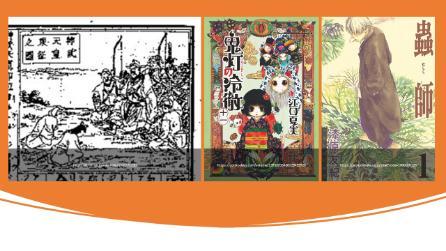Power dressing in politics: The clothing of Kami (Shinto deities) from textbooks to manga in Japan Wednesday 20 April 2022, 2-3pm (UK time)
Published: 24 March 2022
The encounter between indigenous and Western cultures has often been framed in binary and predetermined terms
Power dressing in politics: The clothing of Kami (Shinto deities) from textbooks to manga in Japan
Wednesday 20 April 2022, 2-3pm (UK time)

The encounter between indigenous and Western cultures has often been framed in binary and predetermined terms. According to this image, indigenous cultures are weak and disadvantaged in contrast to powerful, dominant Western cultures, and so are easily damaged through Westernisation or degraded through cultural domination. This paper analyses the case of Shinto, the Japanese belief system which has been practised by the vast majority of the people alongside Buddhism, and has played a key role in modern Japanese history, as a possible counter case where a supposedly inferior indigenous culture ‘appropriated’ Western concepts to reconstruct the country and preserve national sovereignty. In order to address this issue, the talk focuses on the way in which the clothing of Kami (Shinto deities) is depicted, while examining a close connection between political decisions and religious manifestations in modern Japan, as the dress of Kami reveals the idea of Kami of the author and/or the time.
To set the scene, it first explains the dilemma of definitions of religion in Japan, and complex pictures of Shinto, which is usually considered to be the Japanese ancient, indigenous religion, as well as Kami. It goes on to compare the depiction of Kami clothes in two key turning points in Japanese modern history: the Meiji era (1868-1912) and post-war period. The imperial rule was restored in 1868 after nearly 700 years of samurai-governed periods to deal with the immediate threat represented by the Western colonial powers. Shinto became an ideological tool for modernisation through emphasising the divine origin of the Emperor. In doing so, Kami in Meiji are often put on Japanese ancient costumes underlining the royal-divine connection. It then analyses the way in which the clothing of Kami is depicted in manga (Japanese comics) in post-war period. Following the defeat of Japan at WWII, the GHQ of the Allied Forces forbade teaching Shinto at state schools in 1945. Manga authors, usually without any systematic background in Shinto, often depict Kami as beings similar to humankind, dressed in a wide range of clothes from Japanese ancient costumes, kimono to Western clothes and school uniforms. Through an examination of continuity and change in depiction of Kami dress against the backdrop of rapid social and political change, this paper attempts to address the issue of indigenous engagement with the West.
First published: 24 March 2022
Dr Saeko Yazaki, Theology and Religious Studies, University of Glasgow

